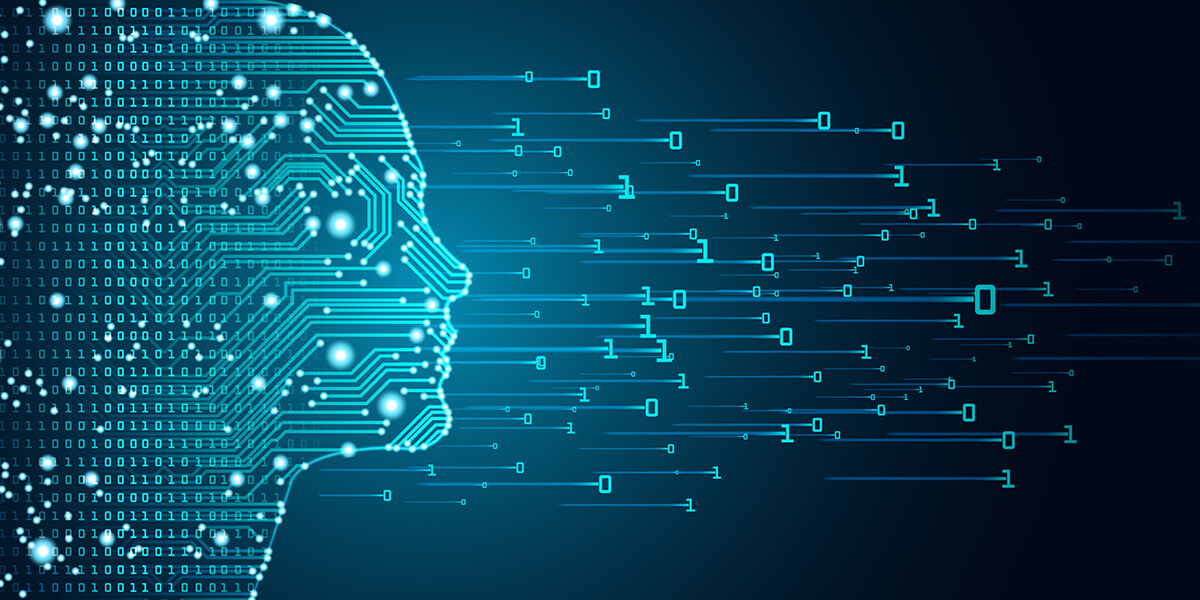Advancement in artificial intelligence (AI) technology has created multiple opportunities for business houses to incorporate AI-based tech (digital humans) into their business. Numerous companies across multiple industries have started adapting AI-based business models.
Digital humans, which was once considered to be a futuristic theory, is now a reality. Companies and start-up firms have started developing digital humans for a diverse field of applications. Although still in the developmental stage, the technology is widely accepted and used across different domains. When digital humans interact with customers on behalf of a company, it creates a customized, unique personal experience for the customers with a human touch that helps in gaining customers’ trust in the company and its product.
At present, digital humans have found their applications majorly in banking & finance, technology & software, entertainment, automotive, healthcare, gaming, retail, education, and telecommunications industries. To understand its significance and future applications, let us first understand what it is.
Related reading: Exploring the possibilities of generative AI in 2023
What is a digital human?
A digital human, an advanced version of chatbots and voice bots is a digital avatar or AI-powered 3D computer-generated human-like virtual being that conducts human-like interaction and communication with real human beings. They can understand human expressions and emotions, simulate human body languages, and react accordingly. Digital humans provide the solution with appropriate verbal and non-verbal responses.
Digital humans operate through a complicated synthesis of technologies:
- Advanced 3D scanning and modeling: It is done to portray precise expressions of human emotion and create a 3D model of a person.
- Artificial intelligence (AI): The AI helps in processing inputs by finding a solution to various questions when asked during human interaction and giving feedback.
- Natural language processing (NLP): For understanding voice commands. It enables the software to recognize spoken words and text in the same way that human beings do.
- Natural language generation (NLG): For forming responses through voice. It teaches the software to understand and evaluate how humans talk, write, and respond accordingly.
Aside from digital humans, there is a concept known as Digital Human as a Service (DHaaS), which is a service that uses digital humans for specific tasks, such as customer service, virtual events, and training, and makes them available to customers. KDDI and Mawari are currently working together to build DHaaS software. Other players in the DHaaS market include Soul Machines, Synthetix, X.AI, UneeQ, and Inteso Cloud, and the list is sure to grow as technology advances and more firms recognize the potential benefits of deploying digital humans for various activities.
Digital humans: The next leap in futuristic human interaction
There is no doubt that digital humans are going to change the way the world functions and operates right now. Digital humans will be present in almost all industries and sectors around the globe. Development in digital human technology so far has demonstrated the worth of digital humans in several fields, which will change the world in ways we never imagined.
Humans will see more digital humans in their lives to help them with various day-to-day tasks. They will have a digital version of themselves which will act as a medium to interact in the digital world. It will allow people to collaborate and work together from any remote location. Companies around the world are actively engaged in developing technology in the field of digital humans. According to Qichacha, a databank that tracks business registrations, there are around 280,000 firms in China that are involved in the business of digital humans.
What’s next for digital humans:
Enhanced personalization for better engagement: Companies and brands operating in the market, with the help of digital humans will be able to interact with the customers by giving a human touch through proper verbal and non-verbal cues. It will allow them to understand the customers’ personalities, including their preferences, hobbies, and lifestyle choices to pitch and place their product.
Installation of interactive kiosks: Digital humans linked with kiosks will provide a better customer experience for people to get the information and self-service options, with the interactive display screen. It will be installed in a number of public and private places and areas including airports, railway stations, multiplex, bus stops, office buildings, shopping centers, etc., to assist commuters and individuals seeking guidance. Companies such as TVC Technology Solutions, Soul Machines, and Userbot are actively working on developing such kiosk systems.
Presence of digital humans in the metaverse: Digital humans will be widely accepted in the metaverse, a digital environment where people meet virtually and interact with one another. Because of their virtual and human-like features, digital humans will interact with people autonomously by representing other brands and people. Their ability to hold open-ended conversations will allow them to perform a number of tasks for metaverse users.
Related reading: The future awaits for metaverse in healthcare: What can we expect?
Networking and collaboration – It will revolutionize the way humans connect and collaborate. For conferences and events, organizers will only require a virtual space and there will be no restrictions on tickets or physical space. The exhibitor needs to purchase data instead of floor space, to showcase their product demos, which will be simulated in real-time.
Synthetic data generation – Digital humans will help make synthetic data, which is annotated information generated through computer simulations or algorithms as an alternative to real-world data. Companies like Microsoft, Epic Games, and Synthesis AI are continuously working on capturing and synthesizing 3D digital human data to train AI models. Synthesis AI’s on-demand synthetic data for computer vision will provide a new sample for developing more efficient models through its scalable data generation platform. Another company called DataGen is offerings solutions to generate synthetic data for faces and humans-in-motion in the form of both images and videos.
As an asset in the workforce – In the coming years, digital humans will be recruited across multiple organizations due to their extraordinary abilities. In managing business activities, digital humans could process huge time-consuming data within minutes, increasing efficiency. In addition to conducting interviews, tracking orders, providing training, and streamlining the entire work process, digital humans will be able to undertake research. They will be able to provide 100% output every time and carry out high-energy consuming duties that require them to work every day without taking any breaks or leaves.
Penetration across various verticals: Digital humans as AI companions have the potential to be used across different sectors and brands. They can be widely used in media and entertainment, banking and financial services, healthcare, retail, education, etc.
Potential applications across different verticals:
Banking, insurance, and financial services – We can say that digital humans are the future of the banking customer experience. Digital humans powered by conversational AI will fill the customer experience gap between online and in-person customer service in the banking industry.
Rachel, for example, is the first digital human in the mortgage market, built by UneeQ and InstaMortgage. It provides customer service to the mortgage industry in the United States.
Education – Digital humans can create personalized educational and training experiences with empathetic abilities. They could interact with students, parents, and other stakeholders at any point in time.
For example, Boston Consulting Group (BCG) appointed its first digital employee, Miku, to educate staff on work-life balance and serve as a personal assistant.
Healthcare – Digital humans will help patients manage prescriptions, book appointments, provide diet tips, monitor health and carry out real-time interactions with patients related to health issues.
For example, Mentemia’s mental well-being app, offers “Digital John Kirwan” that gives mental health support services.
Retail – AI-powered digital humans will provide scalable and personalized retail experiences. It will offer advice and guidance with personal touch whenever the customer wants.
For example, Singtel offers Stella, a digital human that provides a personalized retail shopping experience.
Media and Entertainment – Digital humans will help in enhancing the performance of the computer-generated characters in both movies and video games with a human feel instead of just artificial action.
For example, in the film “The Curious Case of Benjamin Button,” Brad Pitt’s character, Benjamin, needed to appear old, therefore the visual effects team had to construct a digital human that was used in key scenes.
Conclusion:
Digital human technology is still in its early stages, and much work needs to be done before it can reach its full potential. With continued advancement in the field, the day may come when digital humans will be developed as exact replicas of actual humans in terms of appearance, speech, behavior, emotions, and other features. 5G and 6G technologies will provide consistent digital connections, which will play a vital role in providing mainstream use of digital humans. High-speed cellular coverage will improve interactions in virtual environments. Individuals will be able to adopt new identities in the virtual world, improving internal and external communications for various businesses, and ushering in a new era of social interaction.
If you are interested in discovering how Netscribes can assist you with cutting-edge technology insights, market research services and actionable insights to guide their investment strategies, please feel free to contact us.
Based on insights from Urvashi Sethi, Manager, R&I, TMT, Netscribes






